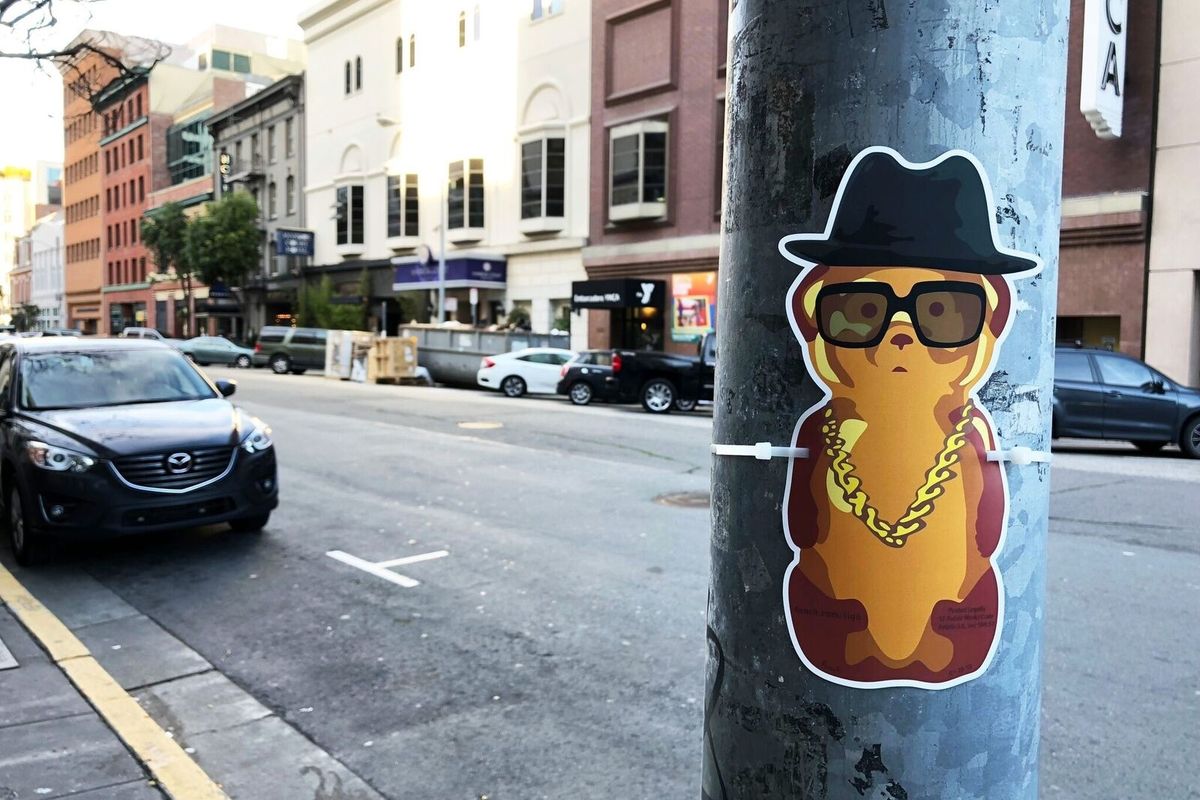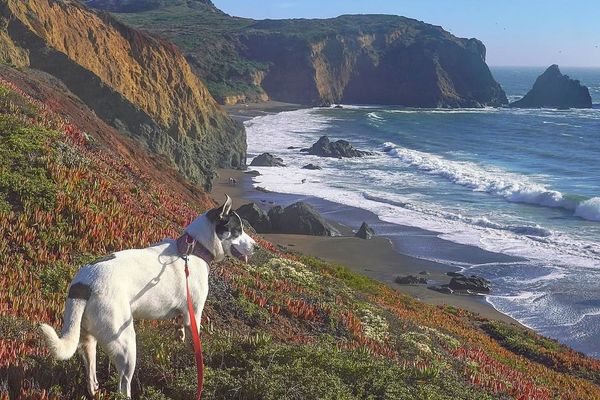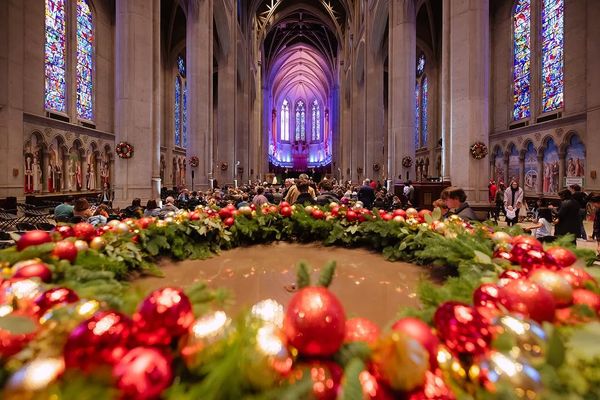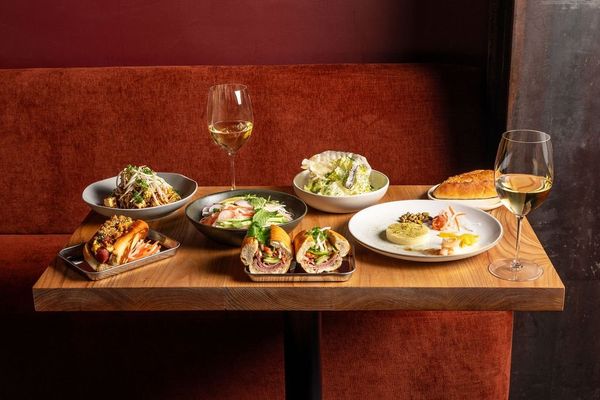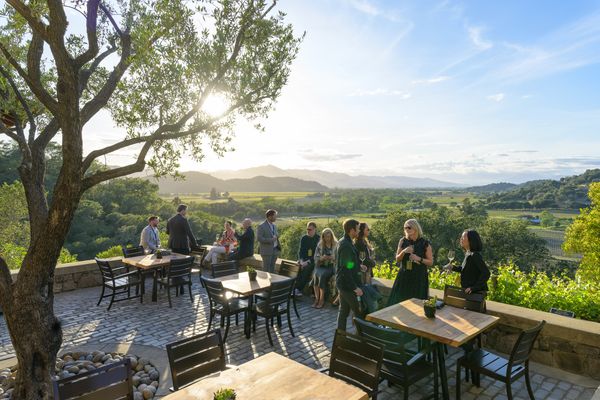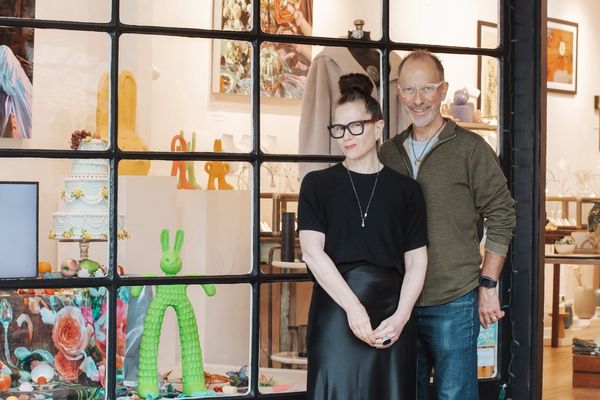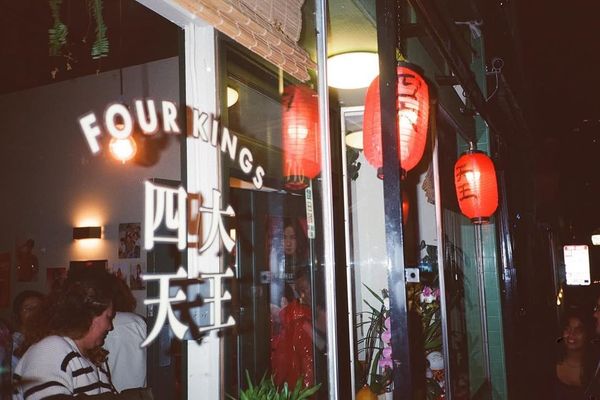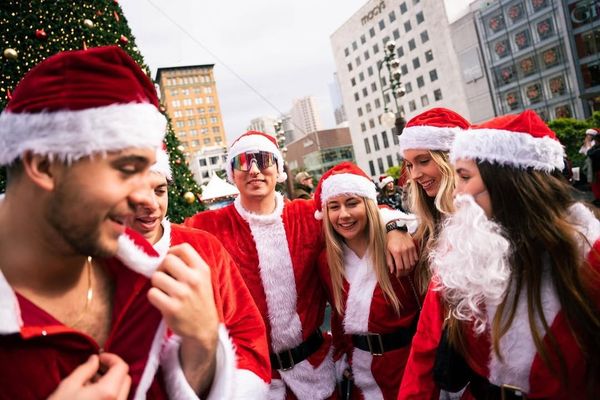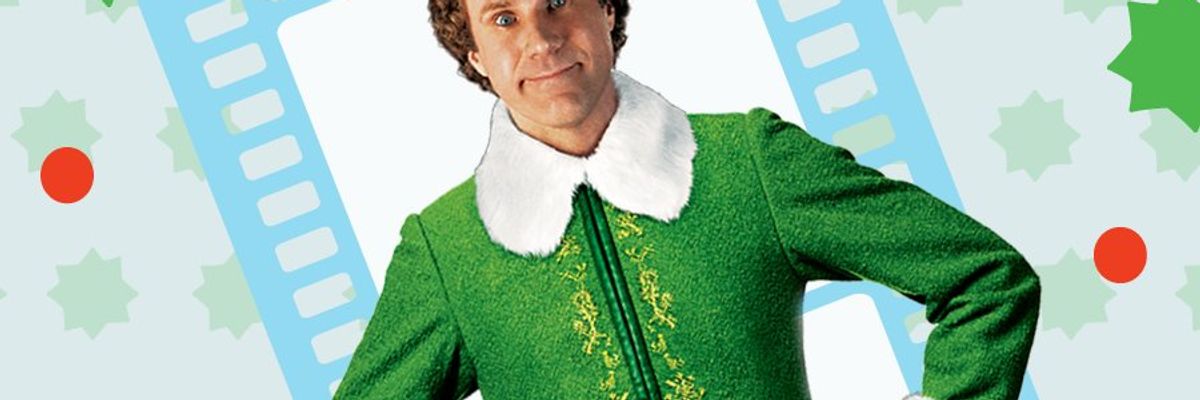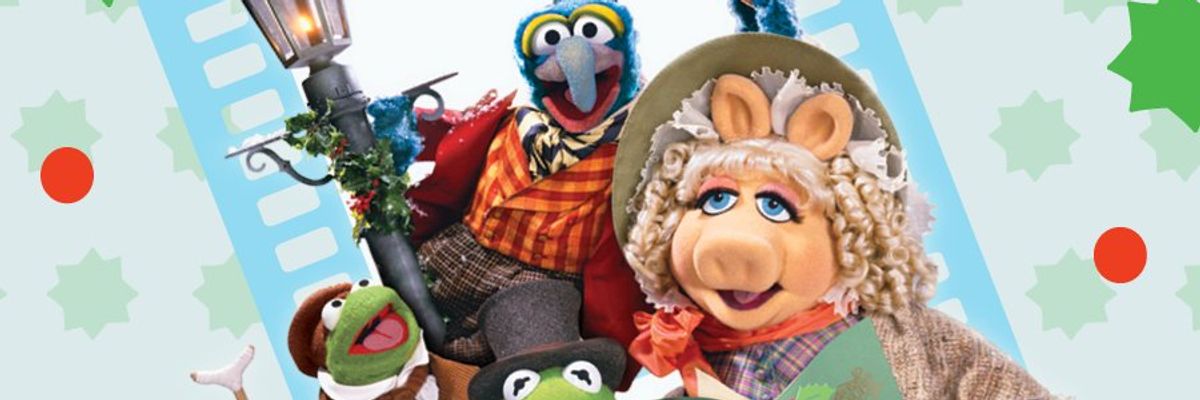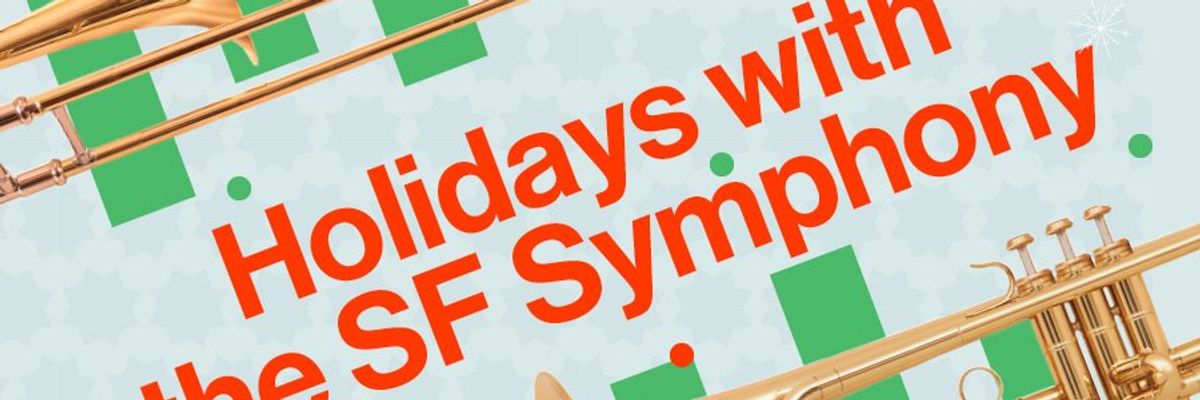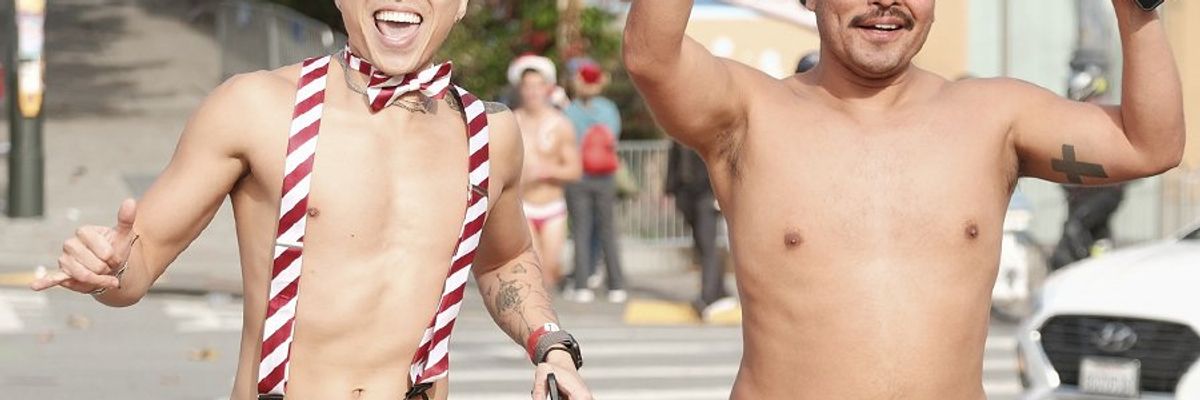San Francisco has been officially "sign bombed." And if you happen to walk through downtown today and find yourself feeling unusually sweet on the city, it likely has something to do with the seemingly endless number of paper, golden honey bears stuck to light and utility poles.
So, where did this adorable art come from?
It's all the work of local street artist fnnch, who on Sunday, along with 24 of his friends, posted 450 of his iconic honey bears—we know you've seen them before—as part of his just-launched campaign to decriminalize the use of stickers and wheatpaste (a temporary glue) and support a new, legal kind of street art called "sign bombing." The intent: to stir up dialogue about how we use our public spaces.
"The absurdity of hundreds of honey bears filling the streets is meant to show the absurdity of San Francisco's graffiti laws, which are a lot more conservative than the rest of the state," says fnnch, who, in his post on Medium, reminds us that "San Francisco has no free-paint walls or other open forums of visual expression, and it in fact criminalizes several forms of street art that are more commonly tolerated."
The article and sign-bombing stunt were timed with the launch of fnnch's petition to encourage the city to decriminalize the use of street art stickers, a common temporary form of public art with no damaging side effects to city property.
If you don't already know fnnch as the guy whose happy honey bear graces Bay Area mailboxes, public walls, and restaurants all while wearing many hats (he's been seen sporting a pirate hat, a chef's toque, a top hat, a Bart conductor's hat, and a pussy beanie), then you might know him as the 9 Cans of La Croix guy. This past year, the Pop Art series, inspired by Andy Warhol's 32 Campbell's Soup Cans and commissioned by a private collector, made national headlines, capturing the id of SF Millennials. He displayed the series at two sold-out shows at The Sub in the Mission.
"The reaction was crazy, for sure," says the artist, crediting Warhol for teaching him that "we have beautifully crafted objects all around us, and we take them for granted. All it takes is for an artist to point their finger at it and ask you to view it as art to get this type of appreciation."
But this fine art commission, as well as the others that have followed, are the exception to the rule of fnnch, who much prefers to bring his artwork to the streets (and doesn't use his real name due to the so-called-shadowy nature of the work).
Talking to us inside his pristine Edwardian-era home in San Francisco's Duboce Triangle—where the walls are filled with art, both his own and that of others, and an impressive hallway of honey bears literally brings his message home—the skinny, clean-cut 31-year-old is amped on his mission: to get people to question why street art is criminalized more often than it's embraced. His weapon of choice? Very cute and innocent cartoon-ized creatures and symbols—from plump ladybugs that crawl across sidewalks to bold, perfect-for-Instagram lips—whose public placement also happens to be very illegal. They're like cheeky dares to any police officer or NIMBY who might catch fnnch in the act.
"That's the crux of what I'm trying to do—surprise and delight people with art they love, and get them to question the use of public space," he says. "I want to create a cognitive dissonance as they realize that the work is illegal and could be taken down, but they may feel like it should stay."
Fnnch grew up in the suburbs of St. Louis with little exposure to graffiti. It wasn't until he moved to the Bay Area for college that he started following Banksy, the anonymous international icon of street art known for his political and social commentary. In SF fnnch noticed a surprising shortage of street artists, so in 2013, though he'd never held a spray paint can in his life, he decided to give it a try.
Near Duboce Park the city had recently painted a notice on the sidewalk: "Keep your dog on a leash." A "bathroom sign man," as fnnch calls it, was walking a lumpy German shepherd. So he set his sights on his first act of "intervention art."
He put his background in digital illustration to work to create specially designed stencils (which he uses for all of his pieces rather than drawing freehand), conjuring a poodle, a balloon dog, a Keith Haring dog, and an origami corgi, all in his tongue-in-cheek style. And then he dashed out in the middle of the night, nervous to put it lightly, gripping his can of spray paint for the very first time. "I thought someone was going to tackle me at any point," he laughs. "Some people do street art for the rush of it, but not me. I think my work should be legal and I would much prefer to do it during the day."
The dogs were a hit and, in fact, the city let them stay; they remain one of the artist's most popular (and Instagrammed) pieces today.
As he gained his confidence, his work proliferated, with those iconic lips puckering up in Hayes Valley and many more nature-inspired pieces—butterflies, turtles, birds—taking flight citywide. While his name fnnch comes from his family's love of birds, its lack of a vowel is all too urban: He wanted to be able to secure the proper url and social media handles. And Instagram has become an important platform for his art—both for his nearly 60,000 followers and for those who simply stumble upon his eye-catching pictures out in the world. It's a model of interacting with street art first sparked by Banky's famous Girl With the Balloon.
It all comes together based on one main goal, to bring art directly to people who may not normally seek it out. Having grown up with a family of artists and makers—his stepmother is a sculptor, his grandfather a skilled woodworker, and his aunt a professional painter—art was always a natural interest for fnnch, who quickly realized the same isn't true for many.
"Sadly, art isn't part of most people's upbringing—it's considered an elite thing and tends to be highly undemocratic," he says, noting that roughly 1.2 million people visit SFMOMA annually; that's just five percent of the more than 25 million people who live in or visit the city.
"Street art is not like a white-walled gallery where people of similar culture and appreciation choose to gather. Since it's in public, I want it to appeal to the masses, so I paint what I find to be definitively additive, meaning that I can be confident that at least 50 percent of the people who see it would want it to stay," says fnnch, who often returns to the site of a new work during the day to snap pictures of people's candid reactions.
If you're wondering about the city's reaction so far to this week's honey bear bombing and street art campaign, so far it's been positive—his petition to the Board of Supervisors had already garnered nearly all of its goal of 11,000 signatures. An official response from the city is yet to come, perhaps.
"I saw a loophole in the law and went for it," fnnch says. "If these bears can get some dialogue going, then mission accomplished."
You can also see fnnch's work in some local restaurants: Look out for the giant squid at Woodhouse Fish Company, a band of Mariachi bears at Chisme Cantina, as well as two pieces inside the newly opened Emporium Arcade Bar. Check out more in the slideshow below. // instagram.com/fnnch, fnnch.com



